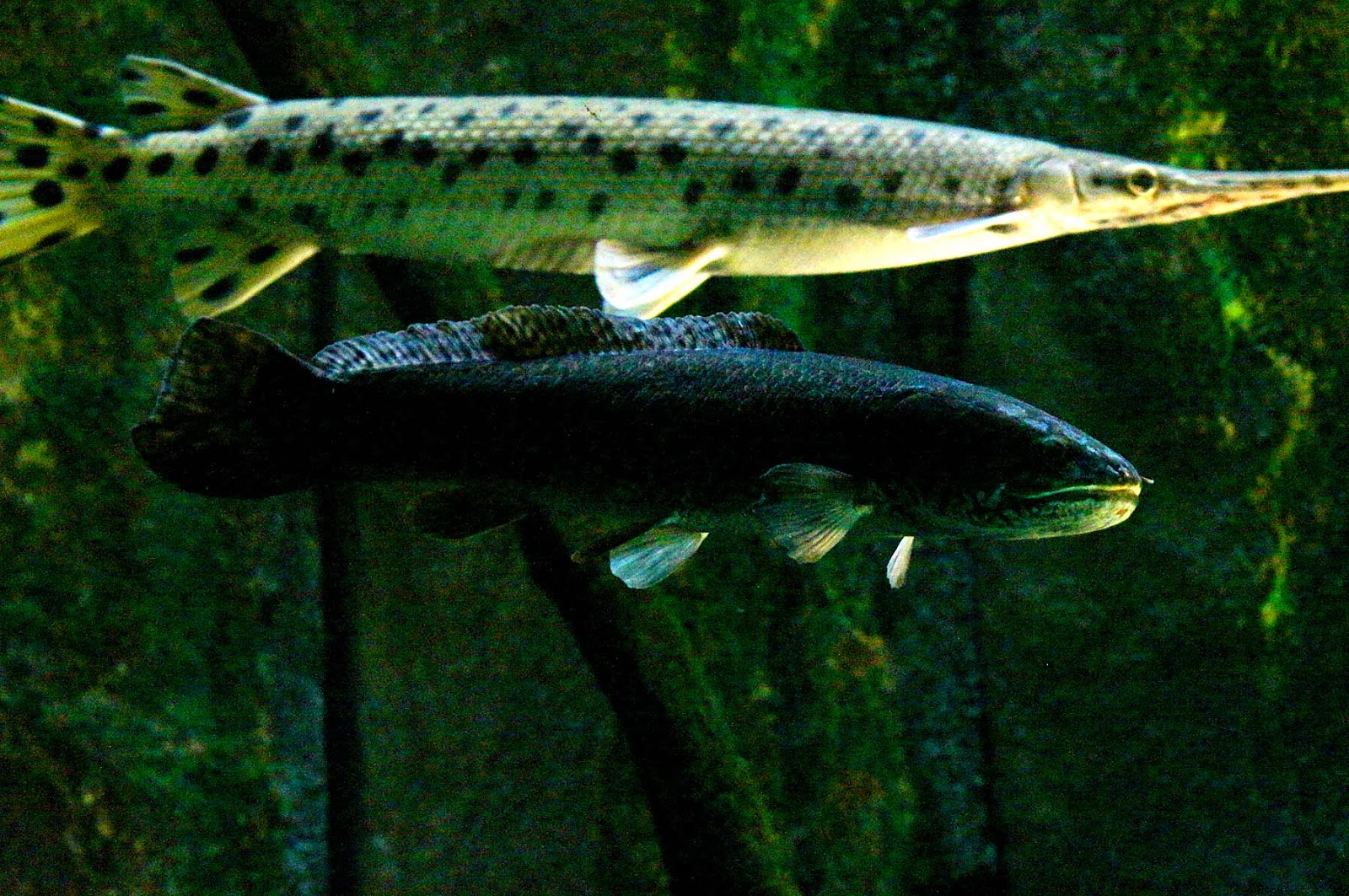 |
| Longnose Gar (Lepisosteus osseus) and Bowfin (Amia calvia), Milwaukee County Zoo, WI 1/15/2012 |
.jpg) |
| Australian Lungfish (Neoceratodus forsteri), Shedd Aquarium, Chicago, IL 1/20/2013 |
.jpg) |
| Atlantic Lumpfish (Cyclopterus lumpus), Denver Aquarium, CO 12/30/2013 |
The second shot shows an Australian Lungfish (Neoceratodus forsteri). Despite looking fish-like in every way, this one's more closely related to you or I than to any of these (or any) other fish! It's in the Sarcopterygii, which today includes 6 species of Lungfish, 2 species of Coelecanth, and the tetrapods -- amphibians, reptiles, birds and mammals! Their last common ancestor with us would have lived around 380 million years ago, while they last shared a relative with these other fish over 400 million years ago. And after all that long time, only 8 species are still recognizable as fish. So if we are going to call one of our fish 'primitive', it's gotta be this one.
But what's up with that last shot? This is an Atlantic Lumpfish (Cyclopterus lumpus). It's in the family Cyclopteridae. The family is a small one, with only 27 species, most of which live in the North Pacific and all of which require cold water. Small family, limited range, and weird appearance -- another 'primitive' fish, right?
Not at all! The Cyclopteridae falls in the order Scorpaeniformes, which fits somehow into the Percomorpha. Other members of the Percomorpha include seahorses, guppies, tuna, and bass -- hardly a primitive group at all, and the Lumpfish is right at home there.
Sorting this all out is a difficult task. All we have are some scattered fossils, and a bunch of critters that we view as bundles of traits. But those traits can be the result of convergence, or they can be tightly correlated with each other. Sometimes it's hard just to decide what makes up a trait. And it's important that we're picking traits that vary more between groups than within, or the results won't make much sense. In the face of all this, I find it remarkable how much we have managed to figure out, and the pictures that we're seeing emerge as a result of this are awe-inspiring: imagine how many moments of drama and intrigue must have played out, with millions of critters chasing each other through an ocean of changes for 400 million years!
I used the term primitive, but I hope this selection illustrates the danger in using that term for a modern, living, breathing critter. Bowfins and Australian Lungfish aren't primitive, they're very much modern animals, surviving in a world that's just as difficult and dangerous for a fish today as it was 400 million years ago.
(1) http://www.tolweb.org/
No comments:
Post a Comment